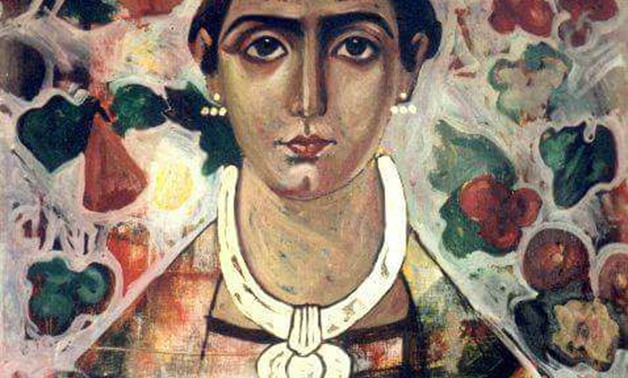
Caption: Painting by Omar El Fayoumi (Photo courtesy of El Fayoumi’s official Facebook page)
CAIRO – 7 November 2017: Visual Artist Omar al-Fayoumi who is internationally recognized launched a new exhibition in Gallery El-Asema in Zamalek titled “The Magician” on Sunday. Egypt Today has toured the gallery and received insights from Fayoumi on his recent projects.
ET: The theme of this exhibition and your style in it is a qualitative change in your work; can you please explain the exhibition’s title and the significance behind it?
OF: The name of the exhibition was chosen by the gallery owner Salah Hammad and I think it is suitable for the work produced. In real life, a magician depends on deception and illusion to convince people that certain impossible things are actually happening. This is the message I meant to convey through the exhibition, but I leave the detailed interpretation of the exhibition's pieces to the viewers; the interpretation can be social, economic or even political.
What is different about this exhibition is that I present my own vision of the events that occurred in Egypt in the past few years; I have worked on the 25 pieces of the exhibition since 2012, where all of the pieces were spontaneously created and came out to perfectly match the exhibition's name.
ET: Omar al-Fayoumi’s name is related to Fayoum’s Portraits. Can you explain that?
OF: I have worked on the Fayoum portraits for the past 20 years, but my obsession about portraits started when I was a student at the fine arts academy. I used to regularly go to the Egyptian Museum's eastern hall on the second floor to look at the portraits for hours. What fascinated me was that they looked like modern Egyptians; I simply felt a connection with them. Just last week in a popular Koshari restaurant, I saw a man washing dishes, looking exactly like people in these portraits.
When I was studying in the USSR, I found some of these portraits in the Moscow Museum and they were treated like the treasures they are, and it seemed as if the artist had just finished working on them.
My first exhibition with the portraits was in 1997 and since then I played on renovating my style. I tried my best not to copy them, so my paintings looked like them but they were not copies. I am not the only artist who worked on the portraits; many have done that, each in his own style.
The breakthrough in the portraits is that they are the first academic art work in history and they were the foundation of the renaissance era in Europe. The approximate time when the Fayoum portraits were painted is 100 A.D. after the oppression of Egyptian Christians in Egypt by the Romans. The development shown in the portraits was a natural result of that era's events; it was simply the creativity of the Egyptian artists of that time.
The similarity between my name Fayoumi and Fayoum governorate, where the portraits were found, is just a coincidence.
ET: What are your future projects?
OF: For now, I will take some time off after the exhibition and see how it will be received by the audience. Then the ideas for the next project will come eventually.
This exhibition took about five years of work and it includes about 25 pieces.
Fayoum Mummy Portraits are wooden pictures attached to the mummies dating back from the Coptic period in Egypt. They belong to the tradition of panel painting and are considered the only large collection from that tradition that exists until today.
The wooden pictures were found in the Fayoum Basin in Hawara as well as all over Egypt as well.
The portraits date to the Imperial Roman era, from the late first century BC to the early first Century AD, and their last production were in the third century. The portraits depicted the faces of bodies that were mummified for burial and mounted into the bands of cloth that were used to wrap the bodies that was detached from the mummies.
They are frontal paintings to the dead person showing the head and the upper chest accompanied with inscription for the person to identify his or her body in the afterlife.
 Caption: Omar El Fayoumi (Photo courtesy of El Fayoumi’s official Facebook page)
Caption: Omar El Fayoumi (Photo courtesy of El Fayoumi’s official Facebook page)
 Caption: Painting by Omar El Fayoumi (Photo courtesy of El Fayoumi’s official Facebook page)
Caption: Painting by Omar El Fayoumi (Photo courtesy of El Fayoumi’s official Facebook page)


Comments
Leave a Comment